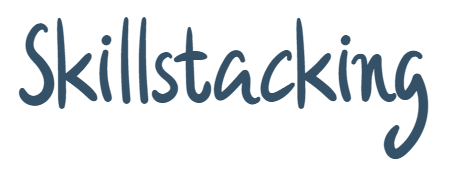Sometimes a task list grow out of control or fills up with boring tasks. Here are a few tricks to shrink a task list permanently, and improve its quality.
1. Automate
Many items show up on a task list week after week, month after month. The combination of computers, smart phones, and online services offer automation.
Automatic Bill Payments. Find and configure banking systems to pay bills, and investment funds automatically. Credit Cards, utilities, property taxes, etc. This helps avoid late charges and interest, and keeps the task off the list. We get bonus marks for going paperless.
People have told me that they use bill-paying as an opportunity to review their credit card bills. These same people sometimes are late and need to pay interest. My philosophy here is that the act of paying the bill and reviewing the bill are two different items on the task list.
Small note: I make sure that bill payments come from accounts that have overdraft protection. In other words, if your balance goes below 0, it I important to avoid paying some kind of fee to your bank. Of course, nothing beats just having the cash, but sometimes a whole bunch of bills collude to make bank accounts go negative. Consider using a line of credit with a positive balance to pay bills. By default this an account with built-in overdraft protection, and the interest rate is much better than any credit card.
Setup Email Rules. I have email rules in place to automatically reply/delete/forward/categorize my emails. I have so many subscriptions that I have in place that I automatically pushed them to a subfolder so that I never see them when checking my email. My EMail Inbox itself is a task list, a precious place. I do not need to be reminded of the latest sale at BestBuy while responding to important emails. Unsubscribing is also a good idea.
2. Schedule Just In Time Items
My task list only gets task when the time is right. I schedule them to pop up automatically. This results in a smaller list, but, most importantly, it is impossible to forget items in the future. It is important to have them show up well before the due date. Examples:
- Weekly. Scan snail mail, file documents, review to do list, etc
- Monthly. Review Credit Card Bills, Review Utilities, etc
- Quarterly. Change Air filter, check water purification system, rebalance stock portfolio, etc.
- Yearly. Review retirement funds, prepare taxes, review car and auto insurance, etc.
I like to schedule non-recurring tasks to show up just in time in my to do list:
- Book next dental appointment.
- Follow up phone call I promised someone.
- Review a Lease that is coming due.
Some have argued that this does not reduce the total amount of work, and they are probably right. However, for me, this reduces the size of my list and gives me peace of mind that I am setup to be reminded to do things ahead of time, rather than scrambling to keep up.
3. Learn to Say No
It is difficult to say no to people. So our task list grows with items that we do not want to do, or have no business doing. We end up handling other people’s problems! In general, we avoid saying no because we feel guilty, or we want to please, or we feel a sense of duty. Even worse is that we fear saying no to acquaintances or friends. At the same time, we have no problem saying no to those closest to us.
I know working parents who have come home and spent the evening baking cookies for the next day’s bake sale rather than buying them at the store. I have seen people (friends?) asking for favours, and never returning them: one sided relationships. “Can I pick your brain?” requests are not always worth doing, or come at too busy a time.
Ultimately, not saying “no” ends up costing us time. Time away from family, time away from our own productivity, time away from rest. It is important to be selective. So practice saying “no”. When asked to do something that you feel you should not be doing, try:
“No, I’m not going to do this”. Probably the most difficult for people. It offers up no reasons, and can feel the most harsh.
“No, I am very busy, and I only accept requests that I am fully excited to do.” This tells the requestor that their request is not exciting for you, and gives them a reason.
“I can’t do this at this time. Maybe in a month or so”. This is good, but lets the requestor know that maybe later you would consider doing it in the future.
“I would love to, but I am trying out a personal policy to only add the most urgent items to my list”. This approach somewhat de-personalizes the interaction and allows both sides to save face. The policy is the reason.
“I can do it, but you have already asked me for A, B, C. This is D. How would you like me to prioritize this?” This works well with a boss who is just stacking more items on your list that you cannot handle them all and forces them to ask themselves if they really want it done.
I suppose I could write an entire blog post on saying “no”! So I will stop here. Just say No. Shrink your task list. Nuff Said. 😉
4. Never Do Them
There are items that sit on my task list for years. They are items that have never moved up in priority. I ask myself if it would bother me to never ever do them. I typically delete these and force myself to feel good about it.
I have a graveyard of “will never do” list which is fun to look at sometimes. Always remember the you will die with a task list. So why live with tasks that you would not mind never doing?
5. Shine the Light on Vampire Tasks
Vampire tasks are things that you feel compelled to do, but never formally put on your task list. Examples include social media, Candy Crush, Netflix, and drinks after work. I call these Vampire Tasks. In reality, they are actually on my list, but by omitting them, I do not recognize them as such.
So, add vampire tasks to your tasks list. For example, I scheduled daily time spent on Instagram. I limited myself to 15 minutes a day. Social Media companies count on the fact that you are not being mindful of your time.
I tried adding vampire tasks, and after a while, I started resenting them, and eventually dropped or reduced the frequency. My list got shorter through mindfulness.
6. Delegate
In some parts of my life, I can shrink my list through delegation. It is not always easy, and I’ve had to overcome a heap of excuses.
“It will be faster if I do it.” It might be true the first time, but I remind myself how much time I will save in the long run.
“I am the only one who knows how to do this.” That is my ego talking. I am not that special or smart.
“I do not have time to show someone else how to do this.” I need to schedule this task on my own list.
“They will not do it as well as me.” Ego again. Remember the Pareto Principle. 80/20 rule. Typically, 80% is good enough.
“It will take me 5 minutes to do it, but someone else 20 minutes.” Perhaps, but I look at the value of my time versus their’s. Maybe I can actually be financially better ahead by giving the task away.
“I will have to check up on them anyways”. Absolutely true. However, I give my delegate a check list so so all I have to do is verify it. If the checklist is not good enough, it gets improved for the next time. This works very well for recursive tasks.
“I do not trust the person to do it right”. That is a whole other blog post on how to get the proper team members in your life. This says a lot about the quality of your instructions, the people you relate to, and your leadership style.
Delegation is a very powerful tool which can shrink your task list. It requires you to change your behaviours and become a better leader.
8. Measure and Monitor
As I have automated, delegated and systemized parts of my life, much of my list transformed into “monitoring tasks”. Instead of spending my time reacting, I spend more of my time planning and thinking. I monitor the health of my processes, people, and systems.
So, my task list becomes items like:
- Review insurance policies
- Review credit card bills
- Review Retirement Fund
as opposed to:
- Pay the insurance policy
- Pay credit card bills
- Find Money and Contribute to Retirement Fund
Conclusion:
As I finish writing this, it occurs to me that shrinking the size of the task list is not most important. The quality of each task is the key. I realize that I never actually shrunk my task list; I changed the nature of my activities and I get more done with less time. My real struggle to this day is “saying no”. I’m still not good at that, as evidenced by my huge task list.
With the tactics above, if I did not take on more projects, I could keep my list much shorter. The tactics force me to organize and systemize myself differently. For me, I’m always on the lookout for tasks I can automate or eliminate, and I guard my task list jealously, only allowing worthy items to be added.
If you’ve made it this far, you are a rock star! Tell me something you do to keep your task list short (in the comments below)!






At work, I find that things often come back to haunt when they aren’t done right the first time. So you could add “Do it right the first time”, if you think it applies. Not that I like Mike Holmes that much, but I find that the extra effort or reoccurrence (of something that was perceived to be complete) becomes a nuisance and many negative feelings ensue. It also eats at our sense of accomplishment.
Yeah, I know the feeling. Sometimes we take shortcuts and they end up costing us more in the long run. “Do it right the first time” should indeed be added to the list.
Then again, it is possible that that goes against the Pareto Principle 80/20 rule. 80% is good enough.
I think its contextual:
1) Do it right the first time: If you buy 80% of the electrical cord you need, you will never get electricity.
2) 80/20 Rule: Eating right 80% of the time is more likely to succeed than trying (and usually failing) to eat right 100% of the time. Good enough!
Thanks for the feedback!